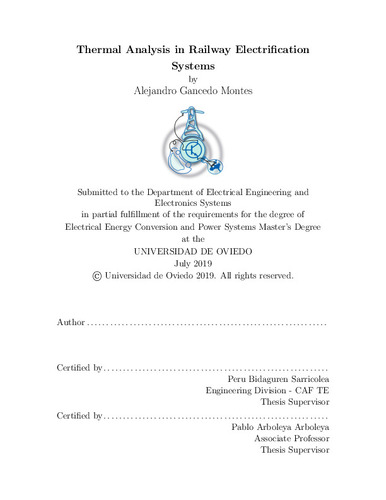Thermal analysis in railway electrification systems
Autor(es) y otros:
Director(es):
Fecha de publicación:
Serie:
Máster Universitario en Conversión de Energía Eléctrica y Sistemas de Potencia
Descripción física:
Resumen:
In this Master's Thesis, a tool to calculate the thermal behavior of railway electrification systems has been developed by means of iterative calculations based on heat transfer and energy conversion equations. This application is called RailThermal app. The calculation method is implemented in Matlab, allowing to study the thermal capacity of the system. The aim of this tool is to size the section of the conductors (catenary, feeder) and calculate the recovery time of the system against unexpected contingencies. With the results supplied by the program, a thermal map of the system is created. For lines, a evolution of the temperature against time and distance is plotted. The input data is obtained from RailNeos 2.0, a simulator of railway electrification systems which is able to calculate the total energy consumption of the system, taking into account the implementation of accumulation devices. This tool was developed by Lemur Research Group of the University of Oviedo and CAF Tunrkey & Engineering.
In this Master's Thesis, a tool to calculate the thermal behavior of railway electrification systems has been developed by means of iterative calculations based on heat transfer and energy conversion equations. This application is called RailThermal app. The calculation method is implemented in Matlab, allowing to study the thermal capacity of the system. The aim of this tool is to size the section of the conductors (catenary, feeder) and calculate the recovery time of the system against unexpected contingencies. With the results supplied by the program, a thermal map of the system is created. For lines, a evolution of the temperature against time and distance is plotted. The input data is obtained from RailNeos 2.0, a simulator of railway electrification systems which is able to calculate the total energy consumption of the system, taking into account the implementation of accumulation devices. This tool was developed by Lemur Research Group of the University of Oviedo and CAF Tunrkey & Engineering.
Colecciones
- Trabajos Fin de Máster [5283]
Ficheros en el ítem





